Champix vs. Smoking Cessation Alternatives: Quick Comparison Tool
This tool compares key features of Champix and common smoking cessation alternatives. Select a factor to compare options.
Quick Decision Guide
Need a prescription? Yes → Consider Champix or Zyban. No → Look at OTC NRT.
Comfortable with pills? Yes → Champix (if affordable). No → Patch + gum or inhaler.
Heart or psychiatric conditions? Yes → NRT is safest; discuss with doctor before varenicline.
Cost is a barrier? Yes → Generic bupropion or OTC NRT are cheaper; cytisine may be an inexpensive off-label option.
When doctors talk about quitting smoking, Champix is the brand name for varenicline, a prescription drug that binds to nicotine receptors in the brain and reduces cravings. It’s been on the market for over a decade, but a growing list of alternatives means patients have more choices than ever. This guide walks through the most common options, weighs them against each other, and helps you decide which fits your lifestyle and health profile.
Key Takeaways
- Champix works by blocking nicotine receptors, cutting cravings and withdrawal symptoms.
- First‑line alternatives include nicotine‑replacement therapy (patches, gum, lozenges) and the prescription drug Zyban (bupropion).
- Newer plant‑derived options such as cytisine show promise but are not yet FDA‑approved.
- Effectiveness varies: varenicline and combination NRT regimens top the success charts, while single‑form NRTs rank slightly lower.
- Cost, side‑effect profile, and insurance coverage are often the deciding factors.
Champix comparison readers often wonder whether the higher price tag translates into real‑world advantage. Below you’ll find the science, the numbers, and the practical considerations that matter when you’re ready to quit.
How Champix (Varenicline) Works
Varenicline is a partial agonist at the α4β2 nicotinic acetylcholine receptor. By occupying the receptor, it delivers a modest dopamine release that eases withdrawal, while simultaneously blocking nicotine from binding when you smoke. This dual action means cravings drop faster than with nicotine‑replacement alone.
Typical dosing starts with 0.5mg once daily for three days, then 0.5mg twice daily for four days, followed by a maintenance dose of 1mg twice daily for 10‑12 weeks. A two‑week taper can reduce rebound risk.
Major Alternatives on the Market
Zyban (bupropion) is an atypical antidepressant that also modulates dopamine and norepinephrine, easing cravings without touching nicotine receptors directly.
Nicotine patch delivers a steady dose of nicotine through the skin, usually 21mg per day for the first six weeks, then stepped down.
Nicotine gum and lozenge provide short‑burst nicotine relief that you can time with cravings.
Nicotine inhaler mimics the hand‑to‑mouth motion of smoking, delivering about 4mg of nicotine per hour.
Nicotine nasal spray supplies rapid nicotine absorption for those who need fast relief.
Cytisine is a plant‑derived alkaloid used in Eastern Europe for decades; it acts similarly to varenicline but at a lower cost.
Each option has its own mechanism, dosing schedule, and regulatory status. The table below lines them up for quick reference.
| Medication | Mechanism | Typical Dose / Regimen | Clinical Success Rate* (12‑mo abstinence) | Common Side Effects | FDA Status (US) | Approx. Monthly Cost (USD) |
|---|---|---|---|---|---|---|
| Champix (varenicline) | Partial α4β2 nicotinic receptor agonist | 0.5mg BID → 1mg BID, 10‑12weeks | ~44% | Nausea, vivid dreams, insomnia | Approved | $300‑$350 |
| Zyban (bupropion) | Dopamine/norepinephrine reuptake inhibitor | 150mg BID, 7‑12weeks | ~31% | Dry mouth, insomnia, seizure risk (high dose) | Approved | $70‑$100 |
| Nicotine patch | Transdermal nicotine delivery | 21mg/24h → 14mg → 7mg (6weeks total) | ~30% | Skin irritation, sleep disturbance | Approved | $50‑$80 |
| Nicotine gum/lozenge | Buccal nicotine absorption | 2‑4mg, 1‑2h as needed, up to 24pieces/day | ~25‑28% | Mouth soreness, hiccups | Approved | $40‑$70 |
| Nicotine inhaler | Aerosol nicotine inhalation | 4mg per hour, up to 40puffs/day | ~27% | Throat irritation, cough | Approved | $80‑$120 |
| Nicotine nasal spray | Rapid nasal absorption | 0.5mg per spray, max 40sprays/day | ~30% | Nasal irritation, headache | Approved | $90‑$130 |
| Cytisine | Partial nicotinic receptor agonist (similar to varenicline) | 1.5mg QID for 25days, then taper | ~35% (European trials) | Nausea, insomnia | Not FDA‑approved (research use) | ~$30‑$50 |
*Success rates are taken from meta‑analyses of randomized controlled trials and reflect continuous abstinence at 12months.
Key Comparison Criteria
When you line up these options, five factors usually decide the winner for most smokers:
- Effectiveness: How well does the product help people stay smoke‑free?
- Side‑effect burden: Are the side effects manageable or likely to cause you to stop the medication?
- Convenience: Does the regimen fit into a busy schedule?
- Cost & insurance coverage: Will your health plan foot the bill?
- Medical suitability: Any health conditions that rule out a drug?
Below we break each factor down for Champix and its competitors.
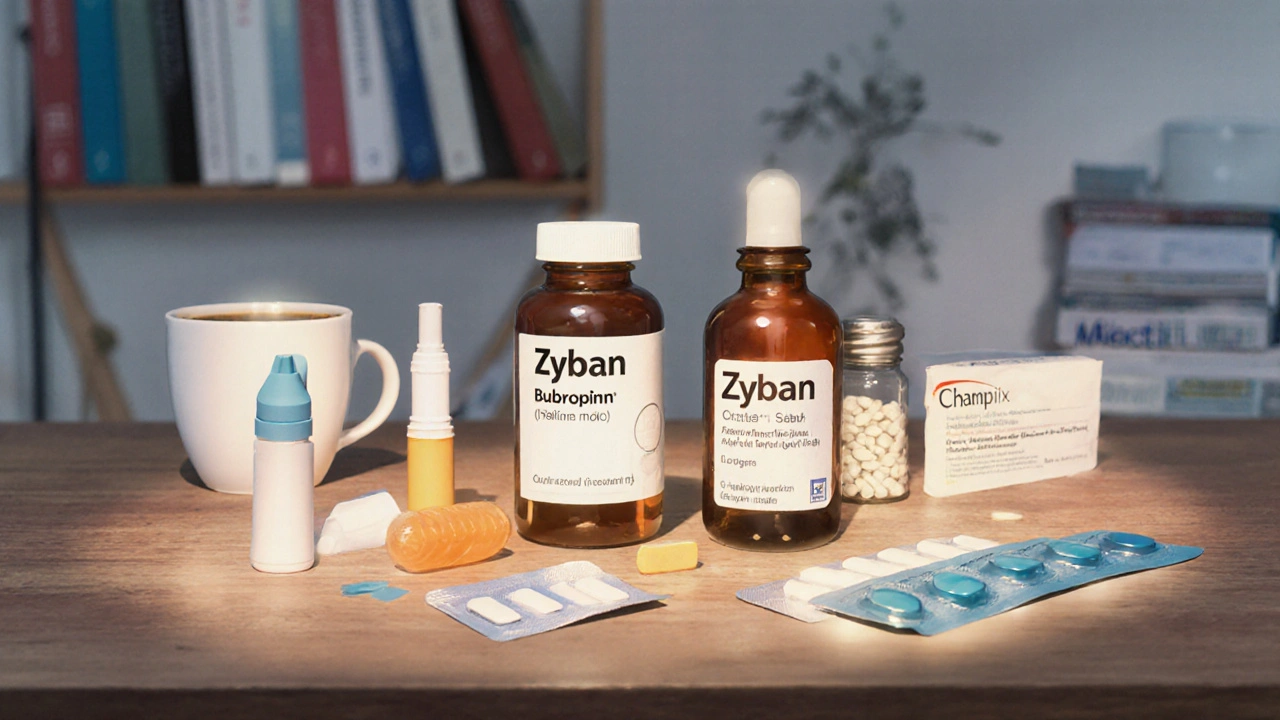
Effectiveness in Real‑World Use
Large Cochrane reviews consistently rank varenicline (Champix) as the most effective single medication, with an odds ratio of ~2.4 versus placebo. Combination NRT-using a patch plus gum or lozenge-gets close, especially when users receive behavioral counseling.
Why does varenicline edge out the others? The partial agonist trick not only dulls cravings but also blocks the rewarding “hit” you get from a cigarette, making relapse less tempting. Bupropion helps, but its success rate lags behind because it doesn’t address the nicotine receptor directly.
For people who can’t tolerate pills, fast‑acting forms like nasal spray or inhaler provide comparable quit rates when used correctly, but adherence tends to drop after the first two weeks.
Side‑Effect Profile
Every medication has trade‑offs. The most common complaints for Champix are nausea (up to 30% of users) and vivid dreams. Most side effects fade after the first week, and taking the drug with food can help. Rare neuropsychiatric warnings prompted FDA to require a black‑box caution until 2021, when post‑market data showed the risk is lower than initially feared.
Zyban’s biggest red flag is the seizure risk, which spikes if you exceed 450mg per day or have a history of eating disorders. It also tends to cause dry mouth and insomnia.
Nicotine‑replacement products mainly irritate skin (patch) or the mouth/throat (gum, lozenges, inhaler). They rarely cause systemic symptoms, which makes them a safe fallback for people with heart disease.
Cytisine’s side‑effect slate mirrors varenicline’s but appears milder, likely because the dose is lower. However, without FDA approval, prescribing it is limited to clinical trials or compounding pharmacies.
Convenience and Lifestyle Fit
Champix requires a twice‑daily pill, which works for most people who already take a daily medication. The start‑up titration can feel awkward, but once you hit the maintenance dose, it’s a set‑and‑forget routine.
Patch users love the “once‑a‑day” simplicity, though they must remember to change the dressing on a weekly schedule. Adding gum or lozenges for breakthrough cravings introduces a second step, but the flexibility can be a lifesaver during stressful moments.
Inhalers and nasal sprays demand more frequent dosing-every hour or so-and can feel conspicuous in public. If you’re trying to avoid the visual reminder of quitting, a discreet pill or patch may be preferable.
Cost, Insurance, and Accessibility
Insurance coverage for Champix varies widely. Many private plans list it as a Tier2 drug, meaning a co‑pay of $30‑$50 per month, but some high‑deductible plans push the out‑of‑pocket cost up to $350.
Generic bupropion is cheap, often under $30 for a month’s supply. Nicotine patches, gum, and lozenges are covered under most Medicare PartD and many employer health plans, usually with a modest co‑pay.
Over‑the‑counter NRTs are easy to buy without a prescription, but the cumulative price of a 12‑week regimen can still hit $100‑$150.
Cytisine, marketed in some European countries as “Tabex,” can be ordered online for about $30 a month, but U.S. patients face legal gray areas and may need to rely on international shipping.
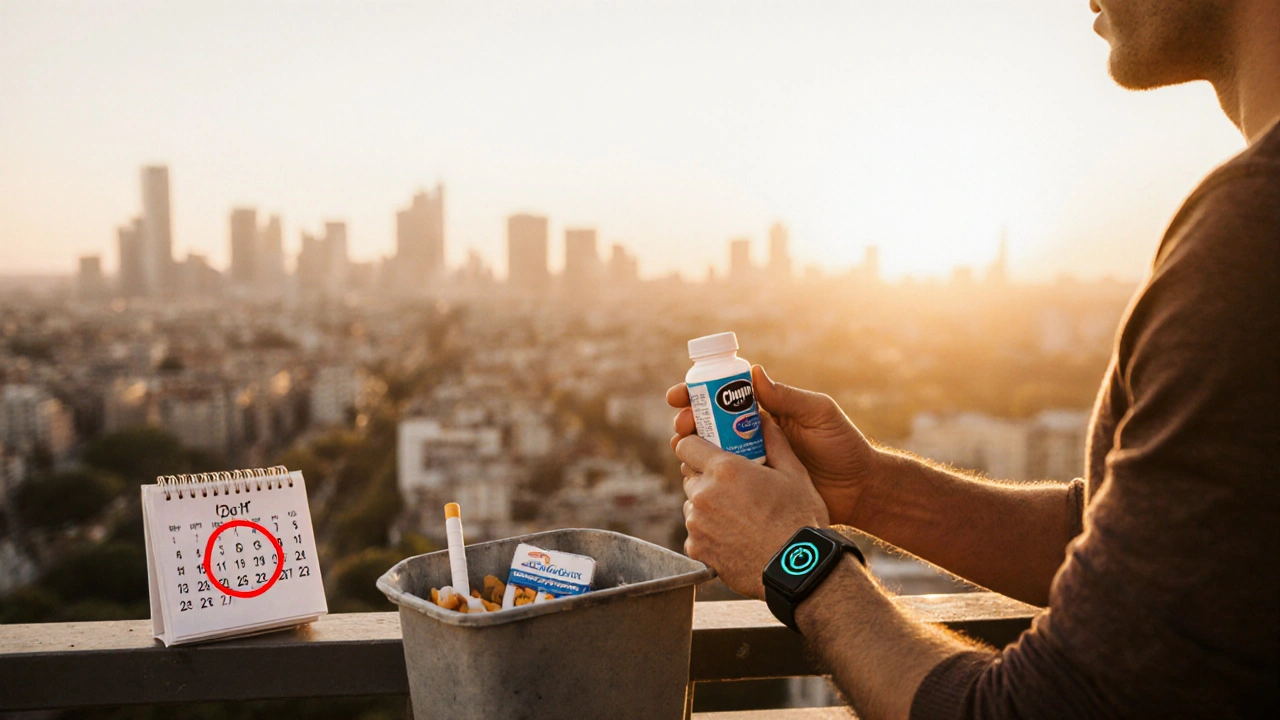
Who Should Consider Champix?
Champix shines for smokers who:
- Have tried nicotine‑replacement products without lasting success.
- Can take a prescription pill twice a day and tolerate a short titration period.
- Do not have uncontrolled psychiatric disorders (though recent data suggest many can still use it safely under supervision).
If you have a history of seizures, severe kidney disease, or are pregnant, discuss alternatives with your clinician.
Choosing the Right Option: A Quick Decision Tree
- Do you need a prescription?
Yes → Consider Champix or Zyban. No → Look at OTC NRT. - Are you comfortable taking a pill twice daily?
Yes → Champix (if you can afford/insurance covers). No → Patch + gum or inhaler. - Do you have any heart or psychiatric conditions?
Yes → NRT is safest; discuss with doctor before varenicline. - Is cost a major barrier?
Yes → Generic bupropion or OTC NRT are cheaper; cytisine may be an inexpensive off‑label option.
This flowchart is not a substitute for medical advice, but it can help you narrow down the market before a doctor visit.
Next Steps for a Successful Quit Attempt
1. **Schedule a brief telehealth or office visit.** Bring your smoking history, any previous quit attempts, and a list of current meds.
2. **Pick a quit date** (ideally within the next two weeks). Align it with a low‑stress period if possible.
3. **Choose a medication** based on the criteria above. Ask your pharmacist about sample packs or manufacturer coupons for Champix.
4. **Add behavioral support**-a quit‑line, mobile app, or counseling improves odds by 30% across all meds.
5. **Track cravings and side effects** in a journal. This data helps your provider adjust doses or switch therapies quickly.
Frequently Asked Questions
How long does Champix need to be taken?
The standard course is 12 weeks, followed by a two‑week taper. Some clinicians extend treatment to 24 weeks for heavy smokers or those who relapsed early.
Can I use Champix and nicotine patches together?
Combining varenicline with NRT is not recommended because it can increase nausea without adding quit‑rate benefit. Stick to one primary therapy unless a doctor advises otherwise.
Is Champix safe for people with diabetes?
Large studies show no significant impact on blood‑glucose control. However, discuss any medication changes with your endocrinologist, especially if you have kidney issues.
Why do some people quit with nicotine gum but not with Champix?
Quit success depends on more than the drug itself. Some smokers prefer the ritual of chewing, which mimics hand‑to‑mouth action, while others dislike swallowing pills. Personal habits and motivation level often decide the winner.
Is cytisine legal to buy in the United States?
Cytisine is not FDA‑approved, so it cannot be marketed as a smoking‑cessation drug. Some online pharmacies ship it under a research‑use label, but consumers should proceed with caution and consult a healthcare professional.

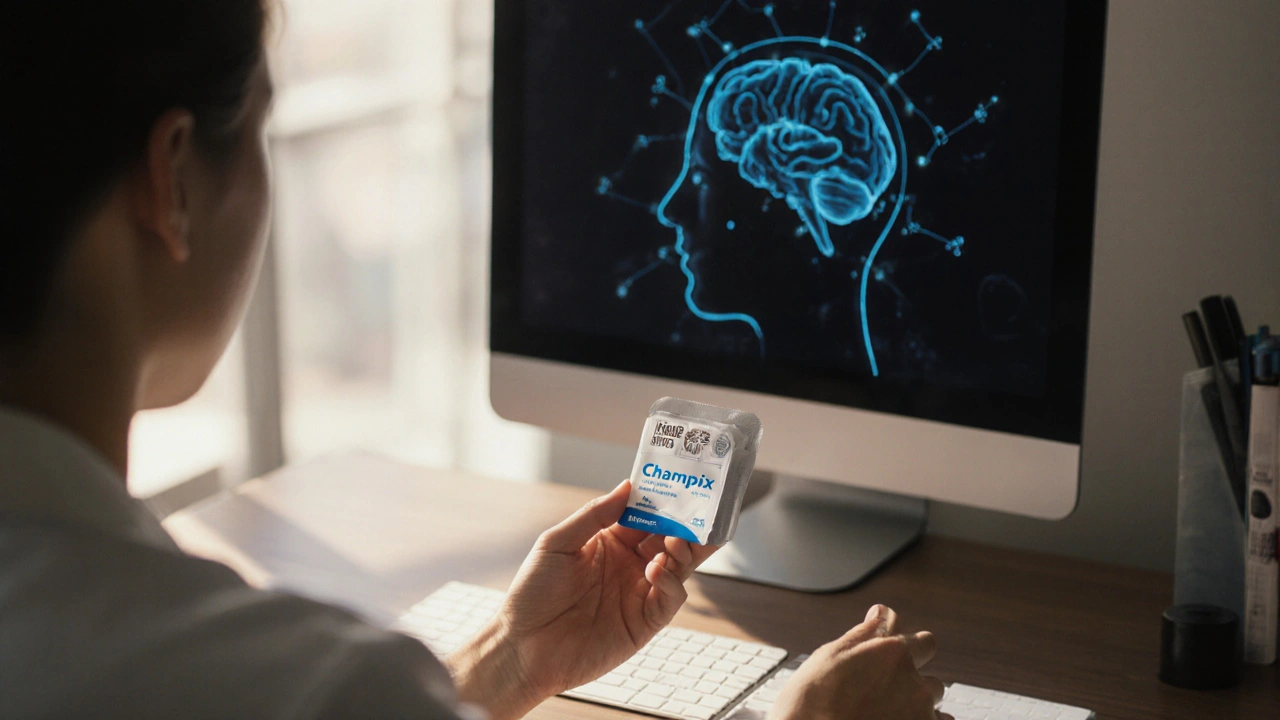
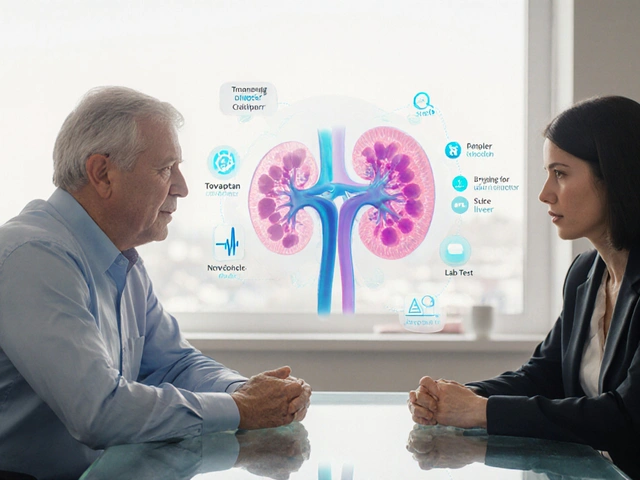


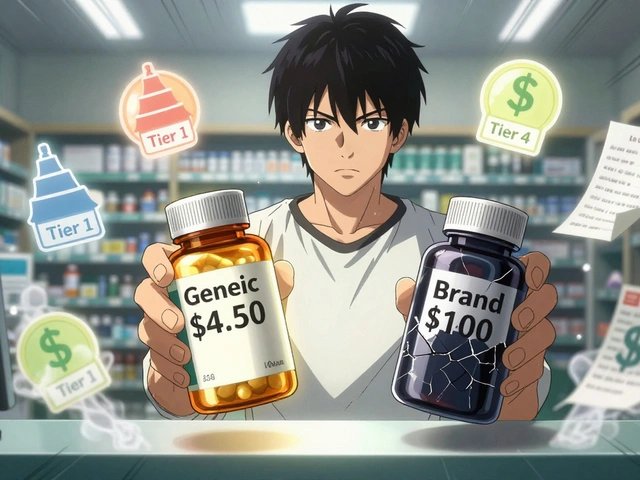



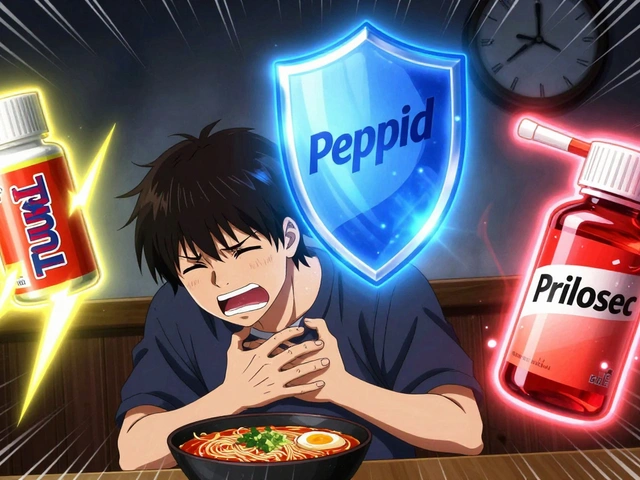
Champix promises miracles, but it's just a pricey placebo for the addicted.
Wow this guide totally clears the fog! 🎉 It breaks down the meds like a cheat‑sheet so anyone can see what's what. The side‑effect rundown is brutally honest and the cost section hits home for those of us budgeting life. If you’re scared of the price tag the cytisine note feels like a beacon of hope.
Our great nation deserves a quit plan that ain’t ripped off by big pharma. Champix might work but give a shout‑out to home‑grown options – we gotta support cheaper effective cures made right here.
Honestly this whole “cheat‑sheet” vibe just feels like hype. People will jump on any pill because it looks shiny but most end up back at the pack. Maybe skip the meds and try cold turkey it’s faster.
I get the excitement but let’s also remember quitting is a marathon not a sprint. Pairing any of these meds with a solid support crew-whether it’s a quit‑line or a buddy-can turn the tide. Even if the cost seems steep many insurers pipe in so dig into your plan before you write it off.
From a pharmacodynamic perspective varenicline’s partial agonism at the α4β2 nicotinic receptors confers a dual mechanism of attenuated withdrawal and antagonism of nicotine‑induced reinforcement thereby substantiating its superior efficacy metrics relative to monotherapy nicotine‑replacement regimens. Nevertheless the adverse event profile notably gastrointestinal dysmotility and perturbations in sleep architecture mandates a risk–benefit appraisal calibrated to patient comorbidities and psychosocial determinants.